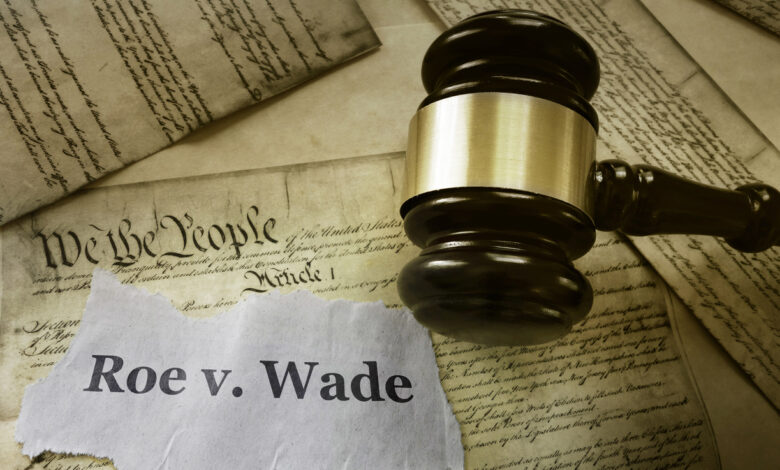The Supreme Court’s Murder Suicide Pact In Overruling Roe v Wade

The big story of the Supreme Court’s reversal of Roe v. Wade in Dobbs v. Jackson Women’s Health Organization is the devastating impact it has already had and will continue to have on the right of women to control their own bodies. The decision consigns women to second-class citizenship and threatens their physical and emotional health.
It also raises grave fears about what’s next. As previewed by Justice Thomas’s dissent, the reasoning employed in Dobbs could easily be applied to threaten other personal rights that, like the right to abortion, are not specifically enumerated in the Constitution, including the right to contraception, same-sex consensual sexual relations, same-sex marriage, and even parental rights that conservatives claim to hold dear.
The ongoing threat to other constitutional rights makes it all the more important to examine not only the consequences of the Dobbs decision, but also the intellectual dishonesty behind it. The fact that four other justices embraced Alito’s reasoning increases the urgency of calling it out.
The most glaring vice of Alito’s reasoning is that it egregiously misstates the core ruling of Roe, “that the right of personal privacy includes the abortion decision, but that this right is not unqualified, and must be considered against important state interests in regulation.”
Alito’s “analysis” of Roe deals with everything but that core ruling. Most of his analysis deals instead with “the arbitrary viability line” established by Roe as the point at which the respective interests of the expectant mother may, depending on the circumstances, give way to the interests of the state. This, of course, is not the core holding of Roe. Rather, it is the way the Roe court balanced the competing interests of the respective parties after determining that the core right, “the right to personal privacy includes the abortion decision,” is protected by the Constitution. The viability line was, if you will, the mechanics of implementing that core right, not the right itself.
Alito thus concluded that Roe must be overruled without ever coming to grips with the actual holding of that case. He did so by applying a two-pronged analysis that the Court had used in previous cases to determine whether a right not specifically enumerated in the Constitution nevertheless falls within Constitutional protection. The first prong is a determination of whether the claimed right is “deeply rooted in this Nation’s history.” The second is whether the right is otherwise “implicit in the concept of ordered liberty.”
Alito botched that analysis as well.
Alito’s conclusion that the right to abortion is not deeply rooted in our nation’s history depends, as do so many historical analyses, on where one starts and stops the historical clock. Alito’s clock starts in 13th Century England and ends in 1972 with the Court’s decision in Roe. In other words, it ignores the last 50 years of our history. If the last half-century doesn’t count, of course, it becomes much easier to argue that a right to abortion is not deeply rooted in our nation’s history. Funny how shaping the time period dictates the result.
Alito’s next conclusion, that a right to abortion is also not “implicit in the concept of ordered liberty,” is even more intellectually dishonest.
The “concept of ordered liberty” isn’t a phrase that trips off the tongue with familiarity, unless of course it is the tongue of a Supreme Court justice. Suffice it to say that ordered liberty generally defines the boundaries of and requires a balancing between competing interests. The resolution of highly consequential legal issues often rises or falls in that balancing.
Alito’s treatment of the competing interests implicated in the debate over abortion rights is so superficial that it borders on the non-existent. He begins by mischaracterizing both of the competing interests in the case. On one side, Alito positions “a woman who wants an abortion.” On the other, the “potential life” of the fetus.
Neither of these characterizations is correct. The woman’s interest is not “wanting an abortion,” it is in maintaining autonomy over her own body in her most intimate decisions regarding childbearing and health care. And the courts have never purported to define the interests of the “potential life” of a fetus. Rather they have focused on the interest of the state in protecting unborn life. Alito eventually gets around to correctly identifying the interests at stake, but only after setting the tone and direction of his opinion by mischaracterizing them.
At the end of the day, however, it doesn’t really matter how Alito characterized the competing interests that have to be balanced in an ordered liberty analysis because he never performs such an analysis. Rather, he blithely brushes aside any need to balance the competing interests with the meaningless observation that people in various states may evaluate those interests differently. As if there aren’t people who evaluate every interest differently. That’s why they call them “competing” interests. If the existence of conflicting points of view obviated the need for a judicial balancing of interests, such a balancing would never take place. The entire concept of “ordered liberty” would be out the window.
Only by doing these deceptive two-steps does Alito avoid dealing – at all – with the core issue of whether the Constitution guarantees a right of personal privacy that includes a woman’s decision on abortion. Instead, Alito dismisses that issue – which should be at the heart of any discussion of the correctness of Roe – as not even worth discussing. He swats it away in a single pathetic paragraph:
“These attempts to justify abortion through appeals to a broader right to autonomy and to define one’s ‘concept of existence’ prove too much. . . Those criteria, at a high level of generality, could license fundamental rights to illicit drug use, prostitution, and the like.”
It is despicable that Alito – and the other justices who agreed with him – would so cavalierly dismiss, in a single sentence, a woman’s right to personal autonomy over her body. It is beyond despicable – and highly insulting – that he can’t tell the difference between a woman seeking to manage her own pregnancy and a prostitute or a drug dealer.
What Alito should have done – what the concept of ordered liberty required him to do – is engage in an intellectually honest balancing of the interests of a woman’s personal autonomy against those of the state in protecting unborn life. That’s what both Roe and Casey did. The tests those two cases established to implement the right to abortion may be subject to legitimate criticism, but both of those cases began with the right starting point, the existence of the right.
A fair balancing of the competing interests at stake in the abortion debate, if one had been performed, may or may not have resulted in a holding that the specific Mississippi law at issue was constitutionally permissible, in whole or in part. But it would not have led to the reversal of Roe and a wholesale rejection of the right to abortion. The doctrine of judicial restraint and avoidance of legislating from the bench – to which the conservative justices paid so much lip service in their confirmation hearings – required such a balancing.
There was plenty of room to accommodate the competing interests on both sides of the debate without overruling Roe if the justices in the majority had wanted to. While some pro-choice advocates hold the absolutist view that until the moment a child is brought forth from a woman’s body, any relationship with it must be mediated, in all circumstances, exclusively by her, no court has ever interpreted the abortion right that broadly, and nobody made that argument in Dobbs.
But the justices didn’t even bother to balance those competing interests.
Rather, they gratuitously reached out to destroy a precedent – and a right – that they didn’t like politically.
Along the way, they performed the neat trick of writing both women and health out of an issue of women’s health.
There has been much talk lately about virtual “murder suicide pacts.” The metaphor is particularly apt here. In eviscerating women’s rights, the Court has at the same time dealt its own legitimacy as a politically neutral arbiter a self-inflicted wound from which it won’t recover for a long time.





If you could help clear the way to expansion of the Supreme Court, that would be great. Too many people think that adding justices is somehow an unprecedented invasion of judicial authority. That may have been what the Senate Judiciary Committee wanted the public to think the actual source of their opposition in more or less describing Roosevelt’s plan as such. Surely, though, those Senator must have been aware that seven times before the number of justices had been changed, the last time to the supposedly inviolate number of nine from seven, in 1869. With the votes of the two added justices appointed by Grant, the Court coud overrule the ruinous Hepburn v. Griswold, which found paper money unconstitutional and thus threatened to upend the entire legal tender system. No, what was unprecedented in Roosevelt’s plan was its clunkiness: every justice aged 70 was to resign or, upon his refusal to do so, a justice would be added to the court. How better to turn those justices and their friends into enemies of the plan, especially since court pensions recently had been cut. How ageist, as though mental infirmity set in at age 70! Whatever Roosevelt’s motives in setting forth such an unworkable plan, the fact is that changing the number of justices had been fairly routine until then. It’s well past time for another change!